Big Data and Precise Marketing – Tips from Baidu
Nowadays everyone is talking about big data, but what exactly is big data? How can we use it to benefit our business in China?
As we all know, Baidu is the biggest, and most popular, Chinese search engine with coverage of approximately 95% of China’s population. It receives around 6 billion search queries per day. With their countless backstage data, Baidu decided to move forward into the big data area and try to convert it into a high-value business service.
Last week 2Open attended a seminar about Baidu’s big data and precision marketing. Here are some point that were discussed during the event.
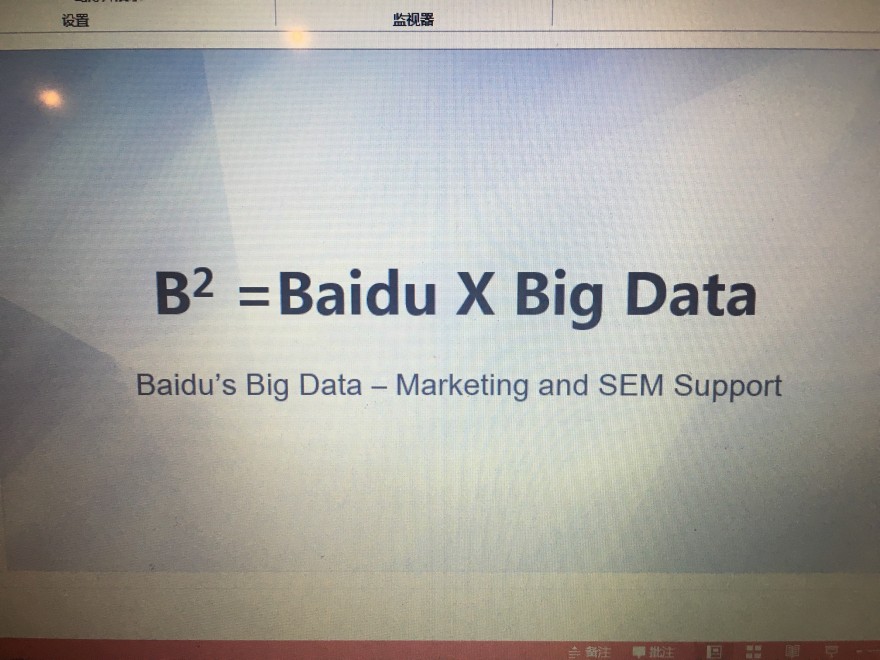
What is big data?
Big data is all about predictions, math applied to large quantities of data in order to infer probabilities. The big data will provide us with the new ability to crunch a vast collection of information, analyze it instantly, and draw conclusions from it.
Big data can be used in a variety of business field: cross marketing, precision marketing, reference location, credit investigation, quantity investigation, disease prediction and travel prediction etc.
For instance, by using Baidu’s big data, we can find out the crowdedness of certain touristic attractions and the popularity of the travel itinerary in China. With the help of this data we would be able to improve our travel plans since we would be avoiding crowded destinations.
Big data for marketing?
In the past Baidu cooperated with a motor company (to protect the advertiser’s rights we will refer to this company as Company A).
First of all, Company A wanted to launch a new A0 level car to the market, but they had no idea what the new car’s selling point was, more importantly, how to handle the pre-marketing and publication campaign. They decided to work with Baidu and used their big data service.
Secondly, Baidu identified consumer’s emotional needs by mining social data, and exploring differentiation opportunities by scanning the perception of other competitors. With all of this data they decided to use “happiness” as the communication concept/selling point of the new car.
Finally, by studying consumer’s profiles, identifying target audiences, and understanding different age groups by analysing their lifestyle and engagement occasions. The new car’s main target audience resulted to be 23-45 males, in tier3, tier4 and tier5 instead of tier1 and tier2 cities. This turned out to be the most important consumption market.
For lifestyle occasions, Baidu chose readings, videos, movies, TV series and gaming as the main five labels for determining their target audience. Company A even designed a LOL (League Of Legends, one of the most famous online games) poster ads.
For engagement occasions, there are five stages before the final purchase. Baidu defines them as; category research, comparative study, trial, finding 4S stores, and financial plan. Then they give related suggestion to company A for every stage of the marketing strategy.

Baidu named its big data & marketing decision platform “Sinan”(http://sinan.Baidu.com/). This platform mainly provides nine functions: audience definition, brand recognition, interest insight, search behaviour, demographics, geographic, media preferences, multiple data merge, and media buying suggestion. With the help of a big data platform like this any marketing strategy will be much easier for a company.
Still wondering about how to improve your business in China? Try embracing big data now! Or… get in touch with us. Here at 2Open we are passionate about every project. Our team of specialists have the expertise and knowledge that your company needs to thrive in the Chinese market. If you have any questions or require any information about our services, please do not hesitate in contacting us, we will be more than happy to assist you.
This article was edited by Andres Arroyo Olson from 2Open.
All you need for your Chinese Landing Page
Landing pages have become more and more relevant over the past few years. With an increase in brand awareness and persuading power, they play a huge roll when it comes to online marketing and ecommerce. This article will focus on the basic structure of a successful landing page as the improvements that can be made to achieve better results.
What is a landing page?
Landing pages are often called guide pages, in general terms, a landing page is the first page that appears when a user enters a website, this could be either the homepage, product page, about us page etc. The channels through which the user enters the website are in most cases clicks on advertisements or results or search engines. There are a few things a landing page has to achieve and although it depends on its business scope, their aims can be simplified in the following way:
-Invite users to keep visiting
-Lead users to make a purchase
-Get users’ personal information
-Invite users to share or to comment
-Other activities, which can bring interactions, etc.

What does a landing page consist of?
Usually a landing page consists on 4 main parts:
- USP (Unique Selling Proposition)
- Core media
- Detail explanation
- CTA (Call-To-Action)
- USP (Unique Selling Proposition)
This is what we call “selling point”. In China, a lot of companies consider this as their core competence. It is a way of distinguishing yourself from other competitors; this is where a company presents its most attractive features about the products or the services it provides. It should basically answer the question: Why should consumers hire my services or purchase my products instead of the others in the market?The main headline of the landing page is also of great importance. It should be a sentence that explains your USP and it should attract the users’ attention. It is basically the first thing users read when they arrive in your landing page so therefore it must be concise and catchy.
- Core media
Media has been used to enrich a landing page, making a page more attractive through the use of pictures and videos or animations.When people are watching a webpage, an interesting picture or video can leave a better impression than a sentence.
- Detail explanation
This is a main part of your landing page. Here you need to put more detailed information to support your USP. It could be points that further explain in a more detailed way the main value proposition of your service or product. It could also include advantages of what your are providing the customer as well as useful real life examples that will continue to support your USP.

- CTA (Call-To-Action)
This is the deal-sealing part of your landing page. It should not be difficult for a customer to complete the purchase of the service or product at any given moment whilst he/she is viewing your landing page. It does not matter if it is a button, a link, or a form; you just have to make sure that it is obvious and eye-catching. Users must know exactly what they are doing on your webpage and all the relevant information that comes with it, both monetarily and logistically.
To sum up
We might take for granted the elements of landing pages, consumers do not really notice all of the work that has been put into a webpage, but as long as you would like to have a successful one, you should pay better attention to these details and think on creative ways to improve them. Nobody starts from the top, so why not give it a try and see how a good landing page can benefit your business?
If you have any questions or require any information about our services, please do not hesitate in contacting us, our group of specialists will happily assist you.
This article was edited by Andres Arroyo Olson from 2Open.
References:
Online to Offline (O2O) in China
E-commerce has grown internationally over the past few years; China is one of the countries with the fastest e-commerce growing market, Alibaba has become the largest business-to-business (B2B) platform in the world. Tmall is the largest business-to-customer (B2C) website in Asia, with more than 90 billion RMB in revenue recorded on Nov 11, 2015(China’s “Singles Day”). Despite their success, return rates have also grown accordingly. Compared with offline physical shops purchases, online shops experience a higher rate of refunds and exchanges. The lack of the buyer experience is perhaps the biggest weakness of e-commerce, that is the main reason why the online to offline (O2O) business strategy was created.
O2O is a business model where companies attract potential buyers to their physical stores through online marketing strategies. These strategies often consist in in-store pick up of items purchased online as well as offering the option of buying or experiencing the items directly at the store.
Fast moving consumer goods do not really have to offer the buyer experience since they are expected to sell quickly and for a low price, this is the main reason why O2O does not really suit this field. Durable consumer goods, like clothing, seem to have a huge potential, they are probably the best candidates for the implementation of O2. Let us say, for instance, that you would like to buy a new camera, you compare all the features of several models online, experience them in physical shops and then after you finally decided the model, you would simply place order online for a reasonable price. Everything fits perfectly. There has been an ongoing talk about this for years, Manufacturers know this, they would like to see this, but unfortunately results are not ideal.

Why is it so difficult for O2O commerce to evolve? Who has the advantages to start implementing an O2O business model? Should large Manufacturers, like those who own multiple shops, implement it? Should offline chain shops do it? Logistics companies? Online platforms? These are questions that have to be discussed. Let us talk about these one by one.
Most Manufacturers with lots of physical shops operate offline, they usually carry out the traditional business scheme; they manage shops and focus resources on shops rather than the end users. Very few manufacturers have their own Customer Relationship Management (CRM) system for consumers, and even when they do, what happens to the employees at the shops? Sales volumes usually measure commissions and performance for employees, however with an O2O business model it makes it harder for manufacturers to keep track of their physical shops and employees performance. No companies have solutions for this, so employees in physical shops resist O2O, so for manufactures O2O is harder to be executed.

In the case of offline chain shops, employees manage products rather than sell them directly, and they have CRM systems for most of the consumers. The real problems these companies face is related to online traffic, do their offline consumers also have the habit of buying online? Even if they do, do they know the chain shops started an online business? Despite the attractiveness of implementing a fully online business, they are still more likely to succeed with a O2O business model. Suning is a real life example of this, with thousands of offline physical shops of household appliances, also expanding its categories one store at a time, and being the third in the Chinese E-commerce field. Their market share is a little more than 3%, far behind the first two companies, O2O is the trend but there is still a long way to go.
What about Logistics companies? Logistics means warehouses and more detailed consumer data; this is the main advantage here. SF-express started Hi-ke in 2014; the goal was to steal market shares from online platforms like Tmall and JD with SF-express’ logistics. This resulted in a lack of experience for consumers and complex order placing procedures.
Online platforms should also implement O2O for one reason, to keep the current e-commerce market share. Tmall and JD just started this; we will have to wait to see how it works out. Their weakness is still the lack of physical shop operation experiences.
O2O needs someone who can successfully implement the business model, in China currently there has been no one who had manage to do this, it seems that what the market needs is a pioneer in this field, future is bright, and the market gap is there, let us wait and see who will rise up.
This article was edited by Andres Arroyo Olson from 2Open.
7 Facts You Need to Know About The Chinese Online Market
1. The Chinese online ecosystem is shaped by the actions of the B.A.T.

The B.A.T. is a group consisting of Baidu, Alibaba and Tencent. They are the dominant players in the Chinese online ecosystem. The dynamics of their competition and cooperation defines the boundary and possibilities of digital marketing and ecommerce in China. Each member of the B.A.T. dominates important segments of the online ecosystem: Baidu dominates the search engine market; Tencent is strong in social media, and Alibaba fiercely rules ecommerce. The results of this competition can provide inconveniences for online marketers. Baidu, for instance, is reluctant to direct search traffic to Tmall stores and pages, where in some cases a company will need special permission from Baidu to promote Tmall stores using Baidu’s Search Engine Marketing (SEM).
2. Baidu’s dominance in the search market
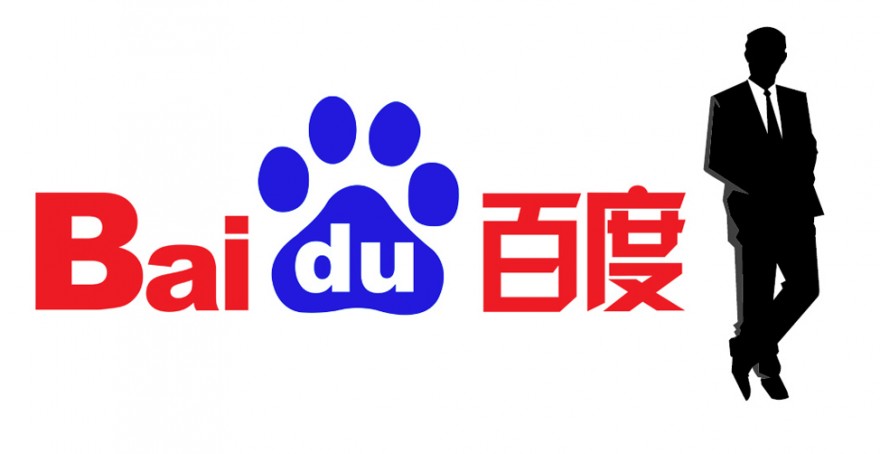
Baidu’s dominance in the Chinese search market means that most search engine related marketing activities requires the cooperation of Baidu to work. Baidu’s Search Engine Optimization (SEO) is different from Google’s SEO. Baidu still requires Meta data for proper indexing and it prioritizes loading speed quite heavily. Setting up SEM accounts with Baidu can either be an easy task that lasts for several working days or an excruciatingly slow and cumbersome process, which might take months to complete. This depends on the involved company’s policy match with Baidu’s requirements. There is also a minimum investment requirement for setting up an account. These can range from as low as 6,000 RMB to as much as 500,000 RMB depending on the type of account that is being opened. One of the most important aspects of Baidu’s listing is the absence of brand protection. This means that brand keywords can be bought by any paying parties willing to buy them. This might lead to unfair price based competition between official suppliers and the unofficial ones, or even from someone that sells fake products through proper channels.
3. Wechat is not just a messaging app; it is a lifestyle app that defines online interaction in China

It is hard not to know about Whatsapp, Facebook, Twitter or Instagram in 2016, yet many are not familiar with Wechat if they live outside of China. Many foreigners regard Wechat as a Chinese version of Whatsapp but it is far from just a messaging app. To be more precise, Wechat combines the function of many known social media sites and utility apps. Users can chat, post their photos, sell items, make online payments, book a ride, buy transportation tickets, invest their money, and more. In addition to being used as a private app, it’s becoming more and more popular in the work place, mainly used for communications. With so many diverse functions and over 600 million registered users, marketers naturally want to use Wechat as a channel to communicate to their target audience. Wechat offers the possibility of a one on one customer service; creating customized functions to improve the brand experience. However, with the Wechat craze comes the high costs of Wechat marketing. Posting merketing content on a big account with upwards of 100,000 followers can cost as much as 80,000 RMB.
4. The Chinese consumer has embraced ecommerce faster than most markets

The rise of ecommerce in China surprised many outside observers. Many consumers born in the 80’s and 90’s have fully embraced the concept of ecommerce as the main way to purchase items. Anything from daily necessities to premium products can be purchased. The Chinese consumer responds well to online promotions and acceptance of new brands, however, most of them are still price sensitive. Foreign brands selling in the Chinese market to the Chinese consumer are less likely to be successful offline due to the high cost of real estate. Platforms such as Tmall and Jing Dong and vertical e-store are the best way to sell to consumers in China. Ecommerce events such as 11.11 are already a cultural phenomenon in China where the total transactions can be above 11 billion USD in one day.
5. China has one of the most highly regulated online environments in the world

China is one of the fastest growing online markets yet it is one of the most regulated ones. Traffic data going in and out of the country is heavily censored and is significantly slower than domestic traffic. This means that local hosting might be necessary for optimum speed. To publish a website, a company is required to obtain the Internet Content Provider (ICP) license to publish any content online. China has a very strict advertising law. Multinationals are regularly hit with fines for violating the law and some fines can go up to 100 million RMB. It is critical to study the proper regulations and laws before entering the Chinese market to prevent future risks and losses.
6. Mobile is not the future; it’s already the dominant traffic in China
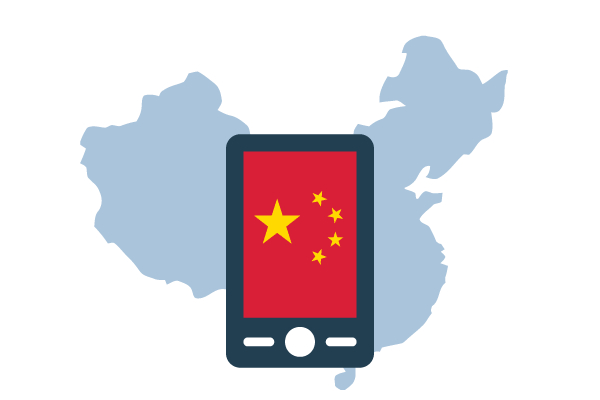 In recent years, PC traffic has been decreasing 15% every year, whereas mobile traffic has been increasing as much as 20% in the same time frame. Many online retailers are reporting that most buyers are using their mobile phones to buy items online. Conversion for mobile traffic is also higher than PC traffic in many cases. This is due to the high penetration rate of smartphones as well as user reliance on mobile devices for online payments. It is easier for users to pay online with mobile phones than it is with their PC. Traditionally, consumers would use their PC to do extensive research before buying online. However, with improved mobile connectivity and mobile optimized websites, many consumers are abandoning PC and in some cases only uses PC for work related activities. The pay-per-click for mobile traffic can create as much as 300% higher than PC traffic in some industries, mainly due to limited advertising space and high demand.
In recent years, PC traffic has been decreasing 15% every year, whereas mobile traffic has been increasing as much as 20% in the same time frame. Many online retailers are reporting that most buyers are using their mobile phones to buy items online. Conversion for mobile traffic is also higher than PC traffic in many cases. This is due to the high penetration rate of smartphones as well as user reliance on mobile devices for online payments. It is easier for users to pay online with mobile phones than it is with their PC. Traditionally, consumers would use their PC to do extensive research before buying online. However, with improved mobile connectivity and mobile optimized websites, many consumers are abandoning PC and in some cases only uses PC for work related activities. The pay-per-click for mobile traffic can create as much as 300% higher than PC traffic in some industries, mainly due to limited advertising space and high demand.
7. Local content through local perspective

The Chinese market is still flooded with marketing contents that are just a direct translation from their original language. Some branding videos of multinational companies do not have Chinese voice-overs, only Chinese subtitles. While these contents do not necessarily fail to communicate their intended message, most have drastically reduced their effectiveness and recall rate due to being less relevant. In order to communicate effectively, companies need to dig deep to find relevant messages and hire local content producers as a bridge to effectively communicate to their Chinese consumers. This is especially relevant when publishing materials online, where the Chinese consumer expects instant gratification, not a bad translation.
This article was edited by Andres Arroyo Olson from 2Open.
General situation of fake products in China
It is common knowledge that fake products are everywhere in China, from large cities like Shanghai to remote small towns in Western China and, not surprisingly, online markets are not the exception, even though there is a lack of acknowledgment from their part, it seems that fake products are a part of China whether we like it or not.
The online market giant Alibaba group was sued in the U.S. regarding fake products regulations. According to Jack Ma, the founder of Alibaba, his company spends over one hundred million RMB each year on actions against counterfeit goods. The situation has improved considerately over the past few years, some shops have even been closed down due to this sort of issues. 2Open, as a company who deals everyday with marketing and e-commerce, is used to supervise online sales in China for many clients and the number of shops selling a certain brand with an unbelievably lower price has decreased noticeably in comparison with last year. There is still a lot of work to do, but exactly what types of products are more likely to be faked?

SHENZHEN, CHINA – AUGUST 04: (CHINA OUT) Police officers deal with fake brand-name items at a shop on August 4, 2014 in Shenzhen, China. Shenzhen police seized a large number of fake brand-name items, like Hermes, Gucci, Rolex, Chanel, Prada, Miumiu, and so on, worth 5,000,000 yuan (810,000 USD). (Photo by ChinaFotoPress/ChinaFotoPress via Getty Images)
The most common faked goods are well-known brands, such as Nike, Adidas, Louis Vuitton, Gucci, etc. If a new brand wants to enter China, it will seldom encounter issues regarding fake products. In this situation, just a small budget is needed for online marketing which could be used for setting up a shop on www.taobao.com, putting online Ads or even buying key words on search engines, all of which can have a positive effect and lead buyers to get to know your brand. Since you are the shop owner and the only supplier at this moment, the buyer will come to you directly; no other shops will take potential buyers from you.
Let us say your brand successfully entered the Chinese market, perhaps one day someone will start faking and selling your products, but how would this affect your brand? Some argue that this is just indicator of the success and popularity that your product has had in the Chinese market and that there are no reasons to be worried. Experts agree that there is plenty of space in the market for both parties; a lot of people prefer to buy original products for a higher price than fake ones for a lower one. Counterfeiting could be considered a promotion activity for a brand, after all, if you are confident about your products, put money into marketing, let people know about it, you will get money back, no doubts about it, but how is the future looking for fake goods?
According to Xinhuanet, the General Administration of Quality Supervision, Inspection and Quarantine (AQSIQ) has gathered around four giant e-commerce platforms: Alibaba, Jingdong, Suning, Yihaodian to sign a cooperation agreement which will help to release inspection results of the fulfillment of product quality commitment. AQSIQ has developed a search platform of inspection of product quality, which will be put online for public use around March 15, 2016.

Fake products problems continue to plague the development of e-commerce. Jingdong and Alibaba have been fighting a war these days, accusing each other of not making efforts to end the fake goods. The offline scene does not look very bright either, street shops are now going through a rough time these days, people are getting used to purchase everything online, from groceries to electronics, during the singles day alone (Nov. 11, 2015) Taobao reached a sales volume of 91,217,017,615 RMB.
It is an Internet Era, no doubt about it, and counterfeit goods should not represent any obstacle if one should intent entering the Chinese market. A smart digital marketing strategy, like the one 2Open offers, can get your brand the recognition it deserves.
Let us know what you think in the comments below.
This article was edited by Andres Arroyo from 2Open.
Top Demand Side Platforms (DSP) in China
Since entering China in 2012, DSP has become a major competition area of all the “powerful and visionary” companies. Big companies like Baidu and Tencent have built their own DSP platforms, traditional advertisement agencies and new players flocked to this area, but there is no stable situation yet in this market. So if you decide to embrace this new technology, doing a test-run is highly recommended. Below are five major Chinese DSP providers 2Open has worked with before:
悠易互通 YOYI
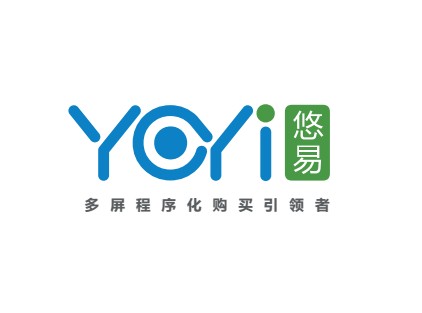
Yoyi Media is a Chinese provider of targeted online advertising and marketing solutions for advertisers and media publishers. Founded in 2007, Yoyi Media specializes in the research and development of online precision targeting technology and Internet marketing services. Yoyi provides both impression-based and performance-based advertising solutions and has developed a network of top publishers in China. Through three product-line offerings YO-Focus(TM), YO-Crazy(TM), and YO-Target(TM), Yoyi Media enables marketers and brands to reach targeted audience based on their demographics, behavior, expectation, time, and location. With support centers in Beijing, Shanghai, and Guangzhou, Yoyi Media serves top brands and their agency partners through a premium ad network that includes China’s best-known portals and vertical sites
品友互动 iPinYou
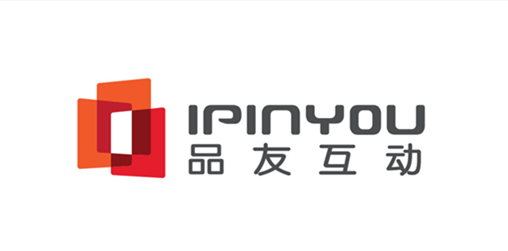
Beijing iPinYou Information Technologies Co., Ltd (iPinYou) was founded in 2008 and is now China’s largest DSP (Demand-Side Platform). iPinYou is headquartered in Beijing and has offices in Shanghai, Guangzhou and Silicon Valley. iPinYou has built world class Real-Time Bidding (RTB) technology and algorithm, proprietary cloud computing platform and patented audience profiling technology. iPinYou has served over 200 brands in IT, financial service, auto, FMCG, travel and more. It has also significantly improved the advertising effectiveness for advertisers and fostered extensive partnerships with domestic mainstream and private exchanges. It is established as a leading provider of audience based programmatic advertising technology.
传漾科技 adsame
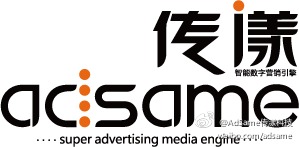
Adsame is a digital marketing agency offering advertising, data insight, and publishing solutions. It helps customers to be more concise and efficient in digital marketing. The company offers two platforms: products platform and media platform. Product platforms include Dolphin Advertising Release and Management and Eagle Advertising Monitoring and Assessment etc. Media platforms include Max Brand Advertising Network (portals, vertical, SNS, and video).
互动通 hdtMEDIA

Established in 1999, HDT Holdings Group is the pioneer both in China’s rich media industry and in rich media advertising formats. HDT Holdings Group consists of six major platforms: digital media platform hdtMEDIA, mobile media platform hdtMobile, programmatic marketing platform hdtDXP, premium publishers service platform hdtSSP, data management platform hdtDMP and mobile ad exchange platform H2.
聚效广告 MV AD
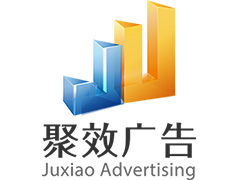
Founded in 2009, MV Ad Platform is a company specialized in targeted online advertising with an efficient and professional elite team. MV Ad platform has R&D centers in Shanghai and Beijing, and subsidiaries in Guangzhou and Hangzhou. MV Ad platform ranks among the best in resource integration, innovation and professional competence.
This article was edited by Andres Arroyo from 2Open.
References:
http://www.marketing-interactive.com/brief-guide-programmatic-ad-buying-china/
https://www.clickz.com/clickz/column/2282204/the-challenge-of-rtb-dsp-in-china
Demand Side Platform in China
Overview of Demand Side Platform (DSP) in China
After arriving to China in 2012, DSP has gained popularity among advertisers due to its way of changing the traditional advertising buying model, from media buying to target audience buying. It lets advertisers see their ads performance more intuitively, allowing them to change promotion strategies more efficiently. As one of the main trends in the digital advertisement development , there is no doubt that DSP will play a more important role in China’s digital marketing scene.
What is DSP?
Demand side platform (DSP) is a system that provides the technology needed to unlock the value of real time bidding (RTB) information provided by ad exchanges. There are thousands of advertisers on the Internet trying to promote their products with high-quality media, precise target audience, optimized advertising strategies and high ROI (Return On Investment). In simple terms, DSP is a service platform for advertisers, in which they can set up target audiences, delivery area and biding price etc.
RTB and Ad exchange
Real time bidding (RTB) is a digital ad buying process that allows advertisers to evaluate and bid on individual impressions. Let us pretend that the Internet is a big cobweb, where users leave traces when they are surfing on it. By using this new technology, advertisers can take all this data into consideration, and then decide the site, placement and bidding price on each ad impression. Usually, this process is completed in 120 milliseconds.
Ad exchange is like an open online advertising marketplace that lets publishers and advertisers connect with each other. You could think of it as a stock exchange; however, it works by auctioning each impression to the highest bidder.

What are the advantages of DSP?
- Wide reach: There is no limit of time and space, advertisers can show their ads when they want to show them and to any target audiences.
- Low cost: Unlike traditional media ads, DSP uses programmatic buying and charges by CPC/CPM, which gives advertisers more flexibility with their budget.
- Specific target: With the Data Management Platform (DMP) of DSP, advertisers can easily target their potential audience according to different characteristics (like age, gender, place, income, etc), this makes advertising more accurate and cost-efficient.
Challenges of DSP development in China:
- Lack of transparency
Many Chinese DSPs do not provide full transparency and access to their platforms, which makes it hard for advertisers to understand and optimize their marketing strategies. Usually, they just provide a report for advertisers after one promotion. As a matter of fact, some DSPs cannot even guarantee the stability of the system because of the lack of technical ability.
- Quality of media resources is hard to define
Usually big publishers just release leftovers from their inventory to ad exchanges, while they build their own private exchanges with premium resources. For example, Baidu, Alibaba and Tencent all have their own private marketplaces, through which they sell these good ads resources to big clients at a higher price. So advertisers who want to work with DSP in China have to work very hard to find the high quality traffic.
- Accuracy of target audience is uncertain
Big companies like BAT (Baidu, Alibaba and Tencent) are reluctant to share their data, and there is no mature Data Management Platform (DMP) in China yet. So most DSP companies just gather data from their own ad network, third-party ad serving, or existing software, which makes the accuracy of target audience data rather doubtful.
What is a suitable DSP?
There are four features a good DSP should have:
- Appropriate RTB capability: A good DSP must be able to decide whether to participate in the auction and what is the biding price for each impression in real time.
- Appropriate directing capability: A good DSP should have a huge Data Management Platform (DMP), through which advertises can target potential audiences more precisely.
- Appropriate data analysis capability: Be able to provide, analyze and optimize reports for advertisers, which are the most valuable part of a good DSP.
- Appropriate technical capability: A successful campaign on real-time bidding (RTB) system depending mainly on the algorithm and matching model of a good DSP.
This article was edited by Andres Arroyo from 2Open.
References:
http://www.marketing-interactive.com/brief-guide-programmatic-ad-buying-china/
https://www.clickz.com/clickz/column/2282204/the-challenge-of-rtb-dsp-in-china
2Open at Territorio Creativo: China Business Overview
On Friday the 5th of February Luis Salvador Galán, the CEO of 2Open, went to give a speech to the well-known Spanish marketing consulting agency called “Territorio Creativo” (https://www.territoriocreativo.es/en/). Territorio Creativo was founded back in 1997 and it has had a huge development ever since. In 2005 its blog (TCBlog) was brought to life which later became to be one of the most influential blogs in the field, this helped and boosted the company to the highest relevant positions in the area. As for 2009, the company decided to focus more on Social Media Marketing and nowadays they operate in many different locations around the globe and have more than 100 employees.
Every Friday they organize a meeting during a breakfast session in which an expert shares experiences, expertise and knowledge with all the company’s members, this is usually held in the Madrid and Barcelona offices. They call it TcDesayunos. Luis S. Galán decided to share his Chinese experiences in the Digital Field and commentated on his personal vision about China’s landscape. Although he could have spoken about the development and best practices of 2Open, he opted for another approach and instead took the opportunity to share business experiences and receive brilliant ideas and comments from the audience.

The talk focused mainly on creativity, differences in politics, and the development of China in certain digital areas. The relation and contrast between creativity and freedom were discussed as well as advantages and disadvantages between the Spanish political system and the Chinese one. The huge development of mobile use and e-commerce in China was also a topic of discussion, since it has had a considerable growth in the past few years. The aim of this talk was mainly to give the Spanish audience a grasp of what the Chinese business environment looks like and where it is heading so they could get an idea of the so called “Chinese dream”.
If you wish to have a look at the article of Territorio Creativo about the session, and if you speak Spanish, here is the link to it: https://www.territoriocreativo.es/etc/2016/02/china-emperadora-del-ecommerce.html
This article was edited by Andres Arroyo Olson from 2Open.
The commercialization of Wechat. User experience or profit?
January 11, 2016, Zhang Xiaolong, the man behind the curtain of the Wechat Empire, who had never given a public speech before, stepped onto the stage of Wechat Open Class and shared his opinion on Wechat’s values. The fact that Zhang stood out at this moment is a symbol of the crucial timing of Wechat’s commercialization.
Wechat has now approximately 650 million users; the process of monetization has never stopped in its five years’ existence. Long have begun the business services, such as Wechat payment, shopping, taxi ordering service, etc.
In his public speech, Mr. Zhang shared some of his concerns about the future of the Chinese IM giant. He said:
“Wechat Public Platform seems like a media platform, but we prefer the Public Platform to be more than that, we want to focus more on the developers and that is our goal for 2016. Where does this need come from? We found out that more and more start-ups initiate with a Wechat Offical Account instead of developing a mobile application because the latter costs way too much. A Wechat Official Account could achieve almost the same things but more cost-effectively.”
“It was not our intention to become a media platform, we have always wanted to build a platform to provide services,” Zhang said, “that is why we even created a Service Account in Wechat, but it has not quite met our requirements. Now we are developing a new form: Application Account. We hope that with this new form of Public Account, when users follow it, it will be as if they had just installed an application. This Application Account will be in silence mode for most of the time but when users need it; they will easily find it in the app. By doing this, we grant a lot of apps a lighter existing form and simplicity.”
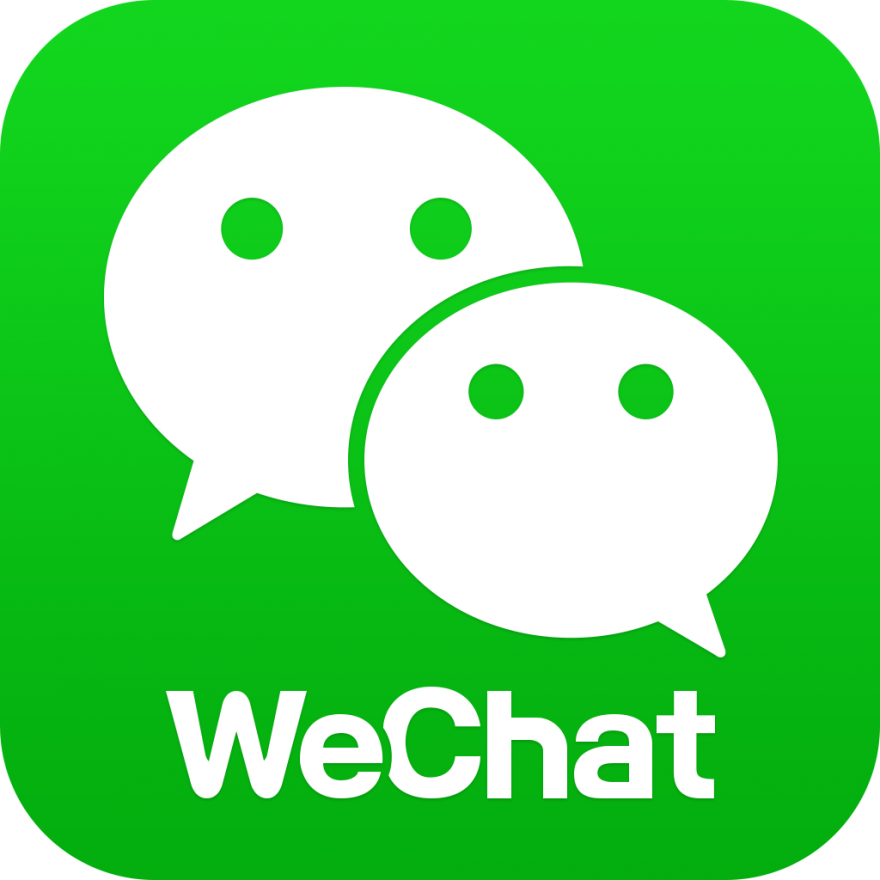 The leader of Wechat also expressed a more strict regulation for commercial activities in Wechat “There will be more restrictions for marketing events in Wechat Moments, because meaningless content will take up users’ time. The same goes for other functions of Wechat, we hope that there is as little information as possible in Wechat, so that the users can focus on their tasks and finish them effectively.”
The leader of Wechat also expressed a more strict regulation for commercial activities in Wechat “There will be more restrictions for marketing events in Wechat Moments, because meaningless content will take up users’ time. The same goes for other functions of Wechat, we hope that there is as little information as possible in Wechat, so that the users can focus on their tasks and finish them effectively.”
After trying to make money with advertisements, Zhang said that he wanted the commercialization of Wechat to be invisible and not a disturbing process based on monetizing of traffic.
One possible reason for the creation of the Application Account is that the current Service and Subscription accounts have impaired the users’ experience. Being buried in numerous and complicated piles of information distracts the users from their goals.

How to balance user experience and commercialization?
This is not a new challenge, and not just for Wechat, social platforms like Facebook, Twitter and Instagram, who already have a mature advertising model based on information flow, come across the same problem every time they try to launch new product for advertising. Unfortunately, there is no existing remedy for this headache.
At the moment, ads in Moments follow several basic rules: if users opt out or just leave it there, the possibility that this ad appears in your friends’ time-line is only 20%. The percentage will rise to 95% if you click, like or comment on it.
Each ad will be able to circulate for seven days, while every single user will only receive one ad within 48 hours. An ad with no likes or comments will be removed within six hours.
We have discussed a lot about the commercialization of Wechat, but is there a possibility that the commercialization of Wechat is not limited by the current models? Could it be possible that the commercialization of Wechat is outside of Wechat?

To understand this, we need to know some fundamental values of Wechat.
- Wechat provides us an essential ID in the era of Mobile Internet – a Wechat account. We use it to keep track of our life and business organizations use it to find us. Before Wechat, the cellphone number was the most important ID, or even earlier we had our e-mail address.
- Wechat has created Public Accounts, this not only solves the problem of digital identity for offline businesses, but also enables a new communication model: one user to many users information exchange, interactive feedback, rich media and mobilization.
- It provides the information flow the highest degree of freedom. We can contact our friends quickly and conveniently by sending messages, sharing information in Moments or through a group chat. All of this has created conditions for a more dynamic flow of money and information.
- This value is still yet unclear however, it would be an important one. Wechat could use Wechat Accounts to locate users and Public Accounts to locate businesses, accumulating trading data between users and businesses so that they could create a “Cloud of consumption”. Based on this cloud, Wechat may provide services like memberships to users or CRM to businesses.
In a word, the commercialization of Wechat is based on output and monetization of these four fundamental values instead of the commercialization of the Wechat as a mobile application itself.
What do you think?
Let us know.
This article was edited by Andres Arroyo from 2Open.
References:
http://www.vvjia.com/article/20151008153623
http://www.99eo.com/info.php?id=8272
http://www.meihua.info/a/65851
http://www.meihua.info/a/65896
http://technode.com/2015/08/24/wechat-ad-moments/
2 Open visits FITUR 2016 confirming the growth of the tourism industry
Last week the 36th edition of the International Tourism Trade Fair (FITUR) was held in Madrid, Spain, and 2 Open was a part of it.
Fitur is one of the biggest tourism fairs in the world and this year’s figures vouch for it:
- Almost 10,000 exhibitors from 165 countries
- 125,000 professionals generating thousands and thousands of business meetings
- 232,000 visitors
- 7,398 journalists from 60 countries
- The Spanish Queen inaugurating the fair followed by the Spanish President of the Government and 80 ministers and leading heads of tourism from the five continents
- It became trending topic with 150,000 international followers on the principal social platforms, 64 million users reached on Twitter; more than 35,000 tweets with the #FITUR2016 and #FITUR hashtag and more than 16,000 users re-tweeting about FITUR
- 10 huge pavilions
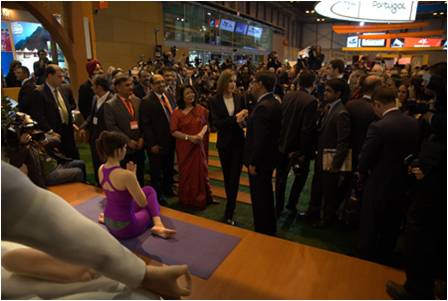 The Queen from Spain surrounded by journalists. Picture credit: www.embassyindia.es
The Queen from Spain surrounded by journalists. Picture credit: www.embassyindia.es
We darted past the Queen of Spain towards our first meeting trying to dodge the hundreds of cameras pointing at her. We were 3 minutes late to our first meeting (out of the 25 arranged for the first two days) and time is exactly what you don’t have in FITUR. Everything is moving at full steam. Even though, we were able to meet old friends and actual customers which is greatly appreciated.
Apart of the fact that FITUR is just the perfect place to meet new potential customers or to find the professionals that can add value to your company in the tourism industry; I would personally highlight a few points that I find interesting:
- There is a very strong interest in health tourism; especially in China. A high percentage of the companies we met in FITUR were somehow related to health tourism and they were all very keen to expand their business to attract Chinese tourists or even to create a base in China. If you think about it, it is quite logical; In terms of population, around 120 million men and women are older than 65 years and the West might be able to get better response to certain illnesses and there is also the trust issue behind it: they trust foreign things better than the domestic ones and here is the huge opportunity knocking at the door

- Asia Pacific was very present in FITUR sharing pavilion with Europe
 Chinese stand was always full
Chinese stand was always full
- The internationalization of smart tourist destinations and the importance of promoting innovation it is key to attract Chinese tourists and Digital will be the future to get there
- Despite being a booming sector among users, collaborative tourism had no place in FITUR. The term collaborative tourism, also known as “P2P tourism” (peer to peer, person to person) refers to a new tourist industry based on contacting individuals who offer their services to visitors who are interested in them. Despite being a new way of travel that has not been very well received by some of the traditional industry rulers, tourists are increasingly using it. But only one exhibitor was present at the fair. In China, P2P rentals for Chinese outbound tourism sector are increasing at an amazing pace. The question that I would raise in this post is the following one…
Is there a political reason behind all this, and if so, how do people intend to resolve this?
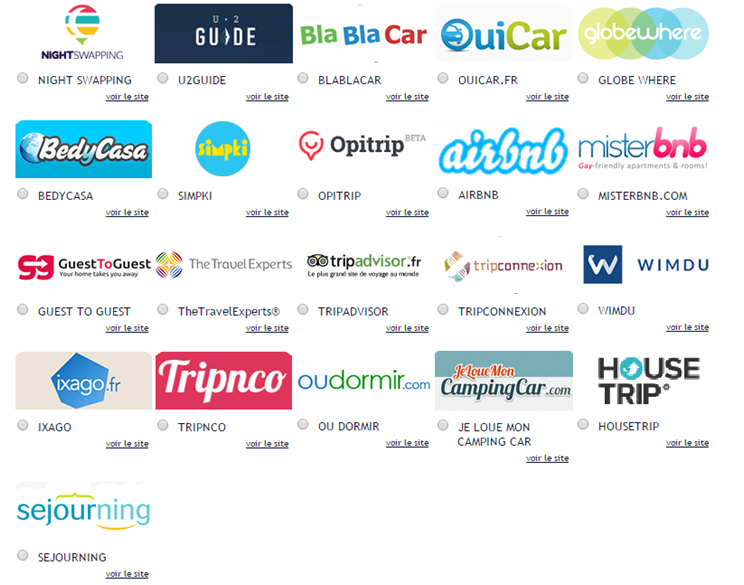
P2P tourism companies. Picture Credit: blog.nightswapping.com
Anyway, we were extremely happy to assist, as we did last year, and for sure we are planning to be there next year. So don’t hesitate to join us and meet for a coffee talking about the future of Tourism in China. That is what we like to do!

Crazy bird with Víctor Barrio










